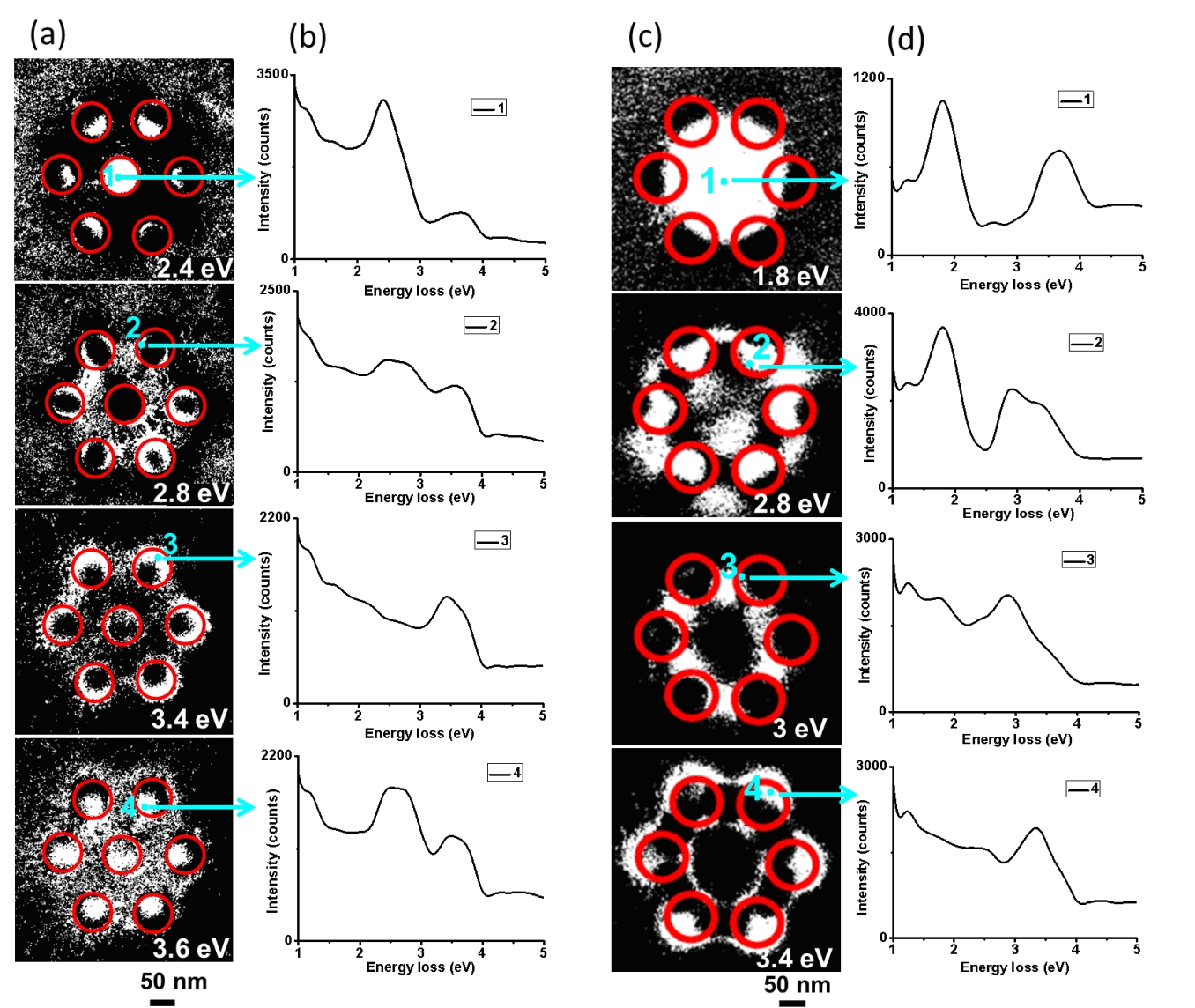IT-5-O-2070 Electron impact investigation of void plasmon ring resonators
Electron energy-loss spectroscopy (EELS) provides a fast and accurate way of investigating the optical density of local states (ODLS), especially plasmons. By detecting the amount of loss of the electron energy, one can study plasmonic modes. Furthermore, energy-filtered transmission electron microscopy (EFTEM) performed in the Zeiss SESAM microscope [1] is an efficient detection tool for mapping the optical modes in two spatial dimensions.
A specific domain of the possible ODLS excitable by the electrons is the localized plasmon resonance (LPR) excitation. LPR is attracting particular attention due to its possibility to introduce optical key elements such as waveguides [2] and resonators [3] below the diffraction limit of light. Due to the small spatial dimensions of these optical systems, investigating their behaviour in a wide energy band is challenging for optical spectroscopy techniques.
Here, using EFTEM and EELS, we investigate the possible modes of void hexamer and heptamer plasmon resonators, with respect to their symmetries and topologies. The hexamer nanocavity is composed of 6 holes with a diameter of 70 nm and rim-to-rim spacing of 30 nm, drilled into a 100 nm thick silver film. The heptamer resonator is composed of 7 holes with one hole located at the center, and the other 6 holes located along the circumference of a ring. Each hole has a diameter of 60 nm and a rim-to-rim spacing of 50 nm.
The proposed structures sustain similar symmetry; however they differ according to the number of holes and topology. In order to investigate the spatial distribution of LPR modes, a peak-finding algorithm [4] has been utilized. Four distinguished modes could experimentally be observed (Figure 1a,b). These LPR modes can be classified into those modes related to topology, such as toroidal plasmonic modes [5, 6], and those only related to symmetries, such as radially and azimuthally polarized modes [6]. In order to investigate the symmetries more systematically, FDTD calculations have been performed, which provides modal decomposition analysis (Figure 2) with selective excitation of different resonances, and hence yielding their eigenenergies and spatial distributions. In this presentation the concept of symmetry- and topology-related classification of LPR modes is thoroughly discussed.
References:
[1] C.T. Koch et al., Microscopy and Microanalysis 12 (2006) 506
[2] S. M. Raeis Zadeh Bajestani, M. Shahabadi, and N. Talebi, J. Opt. Soc. Am. B. 28 (2011) 937
[3] N Talebi, A Mahjoubfar, and M. Shahabadi, J. Opt. Soc. Am. B 25 (2008) 2116
[4] N Talebi et al. Langmuir 28 (2012), 8867
[5] B Ögüt et al. Nano Lett. 12 (2012) 5239
[6] N. Talebi et al. Appl. Phys. A, accepted for publication (2014)
The research leading to these results has received funding from the European Union Seventh Framework Program [FP/2007-2013] under grant agreement no 312483 (ESTEEM2).

